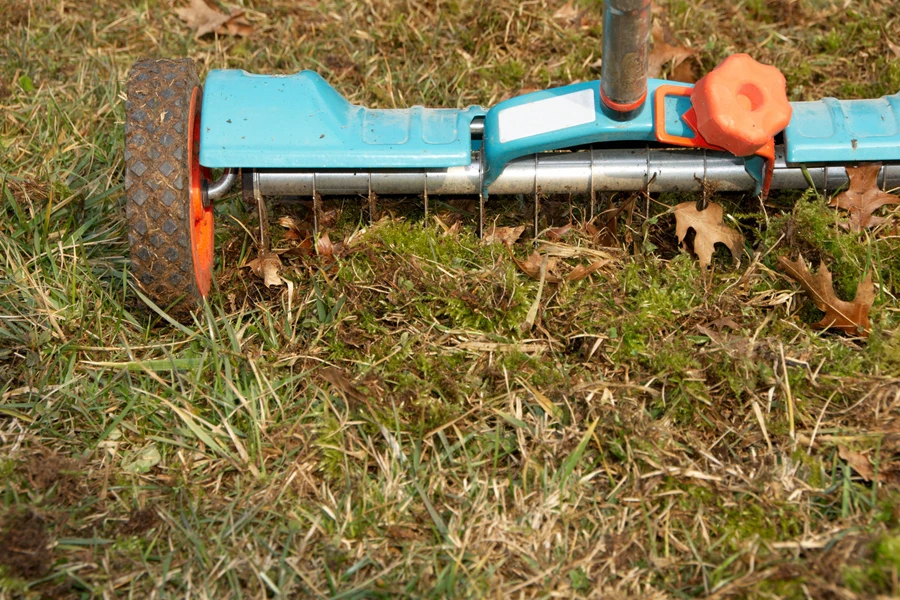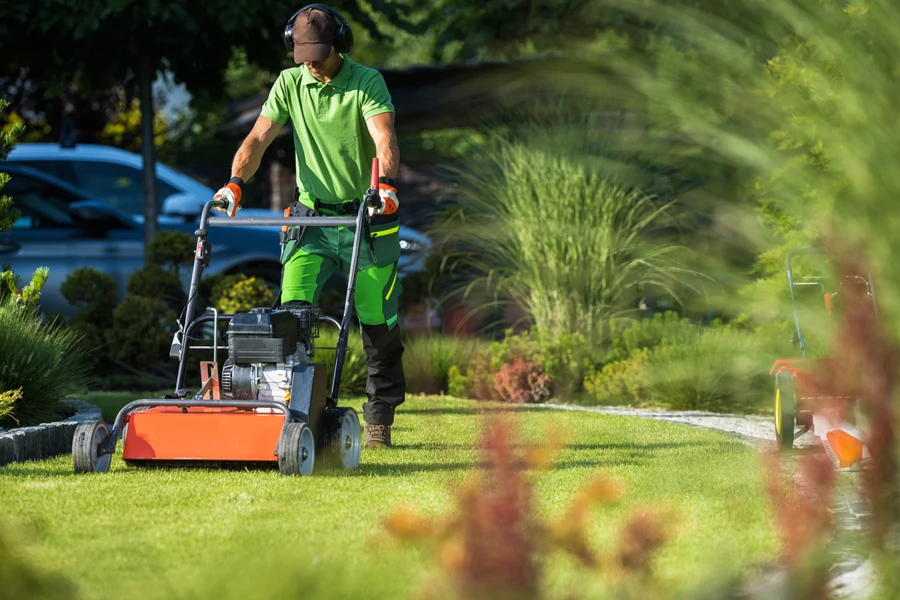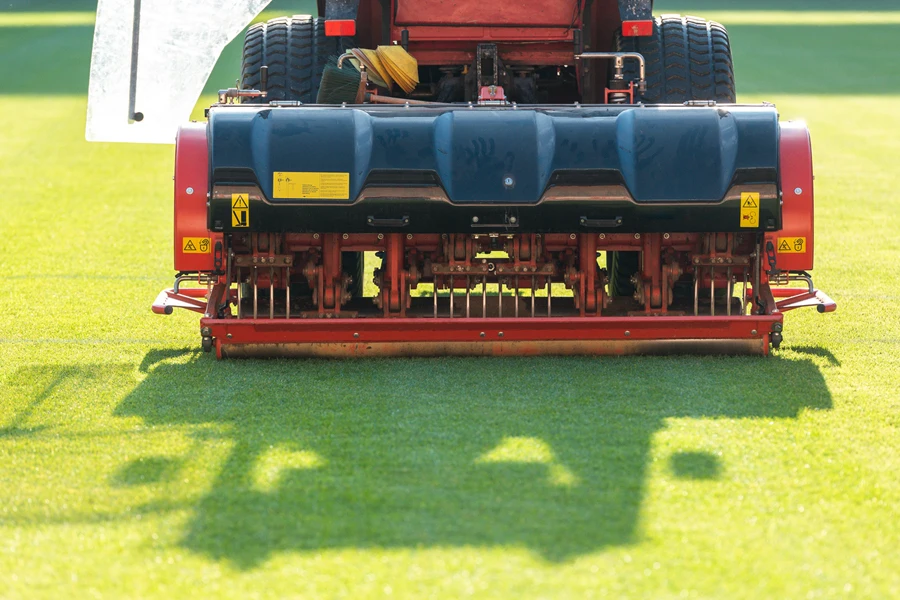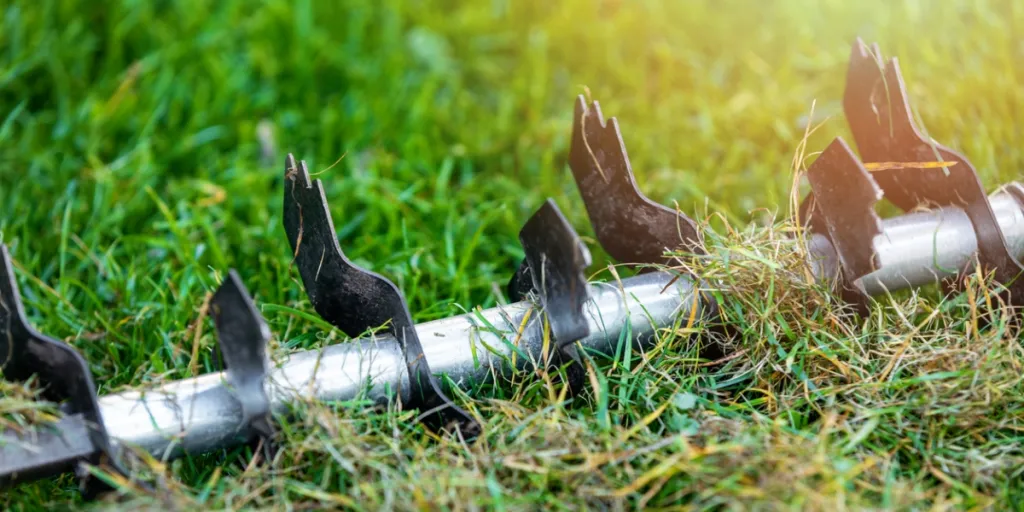Many homeowners dream of having a beautiful front lawn or a lush green backyard, but few fantasize about the significant time and effort that goes into maintaining such a feature. Grass and soil require care throughout the year, as well as a shed full of equipment and tools to do so.
One of the best ways to achieve a thick, full, healthy lawn is to aerate it regularly via lawn aerators. These nifty tools make vertical cuts in the turf, making it softer and removing dead grass roots, plant parts, weeds, moss, and organic matter, which may otherwise form a layer that suffocates the grass.
At a time when more and more people are looking to make the most of outdoor spaces, retailers should look to meet the growing demand for lawn aerators.
In this article, we’ll outline the types of aeration products you should stock to help customers revitalize their lawns efficiently in 2025
Table of Contents
Lawn aerators’ market size and seasonality
Different types of lawn aerators
Conclusion
Lawn aerators’ market size and seasonality

Mowing the grass once a month is unlikely not enough to achieve a picture-perfect garden or lawn. In order to reach those levels of idyll, use of a lawn aerator, sometimes called a dethatcher or scarifier, is likely essential. Here are some basics to know before getting stuck in:
Seasonality
Generally speaking, people aerate their lawns between March and September. Therefore, the demand for lawn aerators drastically drops during winter and starts growing in February, with the best time to aerate a lawn being early spring, when the ground awakens from its winter hibernation.
Some may also repeat the process in early fall, between September and October. However, aeration should be less intense in these months so that the soil has time to recover before winter.
Market size
The lawn aerator market size (including both powered aerators and manual aerators) was valued at USD 12.34 million in 2023 and is forecast to have a CAGR of 5.78% to reach USD 18.29 million by the end of 2030, according to Verified Market Reports data.
A report by Fact also shows that the lawn aerator rental market is expanding, growing at a rate of 3.1% and set to reach USD 182.3 million by 2033.
Different types of lawn aerators
Different models and types of aeration equipment exist on the market, as well as machines that combine both processes simultaneously. Understanding these various tools will help you to stock those that best suit your customers’ needs.
Aeration vs. scarification
Core aeration, consisting of using an aerotor to poke small holes in the ground, is a fairly superficial and quick maintenance activity that can be carried out throughout the year. This helps to remove the lawn’s top layer, mostly consisting of moss, broken grass, and dry leaves that has accumulated over time. If left to rot, these deposits can suffocate and weaken the grass, slowing its growth.
Scarifiers, or spike/plug aerators, function similarly but achieves a much deeper and more intensive cleaning. Scarification reaches down to the lawn’s roots as well as removing dry leaves and debris to promote oxygenation. Unlike aeration, scarification shouldn’t be undertaken frequently – at most twice a year – to avoid damaging the lawn and younger roots.
Manual lawn aerator

Manual lawn aerators have the appearance of a large rake that can be pushed manually along the lawn’s surface to be treated. Budget-friendly and equipped with sharp and pointed blades and two wheels on either side, this tool is suited for cleaning smaller areas, all types of grass, and heavy clay soils or moist soil and doesn’t suffer soil compaction.
The main drawback is that manual lawn aerators require a fair amount of effort, so using them only on small lawns with high foot traffic is recommended. They also require collection of the resulting vegetative material via raking the lawn at the end of the aerating process.
Electric aerators

Electric aerators look like lawn mowers and come in two main categories: those capable of performing both lawn aeration and scarification, and those that only allow for scarification.
Electric aerators are one of the most widespread tools for domestic lawn care due to their ease of use and efficiency, automatically collecting debris in a removable basket.
Electric aurators work by raidly inserting spikes into the ground, whose depth can be adjusted. They can even be used on steep slopes.
Electric lawn aerators offer the best combination of productivity and price and help achieve superior aeration results compared to manual models.
Petrol-powered lawn aerators

Because they don’t need to be plugged in, petrol-powered lawn aerators or scarifiers are better suited to residences with larger grounds. The other main advantages of these tools are their added power and superior performance, although they may require more maintenance and are decidedly more expensive.
Towed lawn aerators

As the name suggests, tow lawn aerators are designed to be connected to a small tractor. Often considered commercial aerators, they are ideal for work across larger surfaces and use springs or blades to work the soil.
Conclusion
Lawn aerators are an essential tool for homeowners and gardeners to maintain healthy, lush lawns. For retailers, understanding lawn aerators’ seasonality and market trends is key to meeting customer demand effectively.
By stocking a variety of models, from manual to petrol-powered aerators, retailers can cater to different customer needs and position their store as a go-to resource for lawn care. As demand for outdoor space maintenance continues to grow, offering high-quality lawn aerators should help you capture a share of this expanding market and boost sales through 2025 and beyond.




